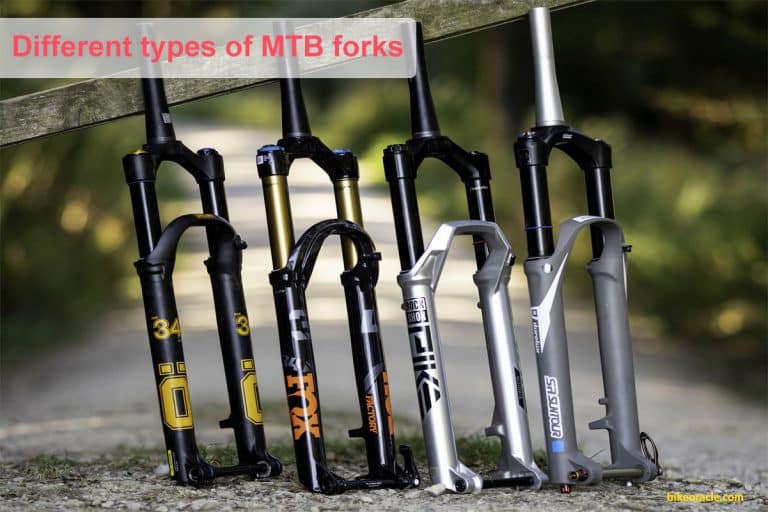Why are Bicycle Tires so Expensive?

Are you frustrated with your bicycle tires constantly going flat? Bicycle tires are one of the most commonly replaced parts on a bike. They’re also one of the most expensive. If you’ve looked at bicycle tire prices lately, you might have noticed they are ridiculously high. So, why are bicycle tires so expensive? And what are the best ways to save money when buying bike tires? This post will tell you everything you need to know about bicycle tires and give you some tips on how to save money when buying bicycle tires. So, Let’s Get Started!
Do Bike Tires Make A Difference?
Bike tires seem like an insignificant detail that you can’t tell apart. You might think bike tires are nothing more than rubber tubes, but they are much more than that. Bike tire choice can have a huge impact on the ride quality of your bike.
The main function of the tires is transferring power from your legs to the road and absorbing bumps on the road surface. Different types of rubber compounds and tread patterns provide different levels of grip while minimizing rolling resistance to prolong your riding time. It depends on what kind of riding you want to do. Choosing the right type of tire is crucial for maximizing performance while minimizing fatigue or even injury over time.
How Much Should I Spend on Bike Tires?
When shopping for a new set of bike tires, there are many things to consider, and it all starts with your budget. Do you want to spend a little or a lot? The most expensive tires are not necessarily the best ones, and some good-quality tires might be priced at the lower end of the spectrum. If properly cared for, a good tire will last for years, so it’s worth considering your future spending power on bike maintenance. You may want to get a higher-end tire and plan on saving money in the long run.
You also want to consider how much you are willing to spend on bicycle maintenance. It includes replacing tubes, caring for your bike, and replacing worn-out parts. By spending more upfront on tires, you might be able to save money in the long run. On the flip side, by purchasing cheaper tires upfront, you can buy a few tires over time before switching out your bike tires completely.
Read More: The Truth About Bridgestone Bikes – Are They Good?
Why Are Bike Tires More Expensive Than Car Tires?
A bicycle tire is more expensive than a car tire because the bike tires are generally larger, giving greater stability and strength. As they have to bear the rider’s weight and any additional weight, they need to be appropriately sized. The bike riders use lighter, narrower tires and smaller wheel rims than car drivers to propel themselves over rough ground without being thrown off balance. A bike tire costs much less than a car one. It needs to be of higher quality as it has far more need for reassurance that it won’t buckle at inopportune moments.

The composition and thickness of bike tires also differ from car tires, as they are specifically constructed for being ridden on roads. Bike wheels are quite different from those on cars, as cyclists must use a different setup if they want to go fast or cover any distance quickly. A wheel rim is not as wide as a wheel rim on a car and can hold less weight and force.
Bike tires are also constructed differently than car or truck tires. While car tires are molded from a single piece of rubber, the bike tires use flexible but strong layers glued together to produce their rims. These rim and tire layers then adorn the rims with various tire sizes for different types of riding and conditions. For example, a mountain bike will have wider tires than a racing one, and a road bike will have narrower tires. It gives them greater or lesser stability when cornering.
The most important reason bike tires are more expensive is the speed at which they are worn out. Bikes can travel far faster than cars, meaning that they go through the miles in much less time and need to be replaced sooner. As with all things in life, material costs are passed on to the consumer so that each part of the bike is built to last longer than its car counterpart. The bikes are also lighter and stronger since they can’t carry as much weight or speed as a car.
Read More: Are Triathlon Bikes Good for Long Distance Cycling?
Would Bike Tires Make A Difference?
Many of us have been told that having well-inflated tires makes a big difference for our cars, and since bikes are related to cars in many ways, it seems logical to think that bikes with well-inflated tires would also be more efficient. But is this accurate?
For a bicycle to work most efficiently, the rider needs to apply exactly the right power to each pedal. The amount of force applied by your legs determines how fast you’ll move forward, but it is not enough to apply as much force as possible. Your body can create resistance, which is the energy you have to expend to keep moving forward at the speed you want.
Imagine that you are riding along at 25 MPH. If you apply a very strong force to your pedals, the minimal amount of resistance that you’ll feel is equivalent to a bicycle moving at 25 MPH. An even stronger force would result in more resistance and a more inefficient ride. Now, let’s say you apply the same force to your pedals, but in a very smooth motion, with no resistance from gravity. The bicycle would move at exactly the speed if you used no force.
How Much Does the Average Tire for an Average Bike Tire Cost?
Bike tire average cost varies depending on the size of the tire. The standard width for most tires is about 26 millimeters. If you know the dimensions of your tire and can determine the component weights from the listing, it’s quite simple to find out the average cost. However, finding the cost can be a bit more challenging. For the most part, the cost of a bike tire depends on the tire’s brand and model. Tires for mountain bikes are typically cheaper than those for road bicycles. As systems are being developed to compute the weight of various components from a photo, it is becoming easier to determine the cost. The price of tires includes several components, including value-added elements that require professionals to evaluate and add value to the cost.
7 Main Reasons Why Bicycle Tires Are So Expensive
Several key components contribute to bicycle tire prices and are major factors that affect the prices of these components. These are raw materials, labor costs, and trade conditions. Below, we’ll detail every component and its effect on price.
- Maintenance
Tires are made of polyamide, natural rough rubber, and tread materials. Polyamides are derived from petroleum and are mostly imported from overseas. They are imported because Thailand only has limited resources in polyamide production. Natural rubber is obtained from Malaysian sap, but Thailand has almost no raw material availability. The production process involves mixing polyamide and rubber compounds into liquid form.
- Raw Materials
Bicycle tires production has many raw materials such as natural rubber and natural rubber products. The largest share of raw materials is made from natural gum, also called natural rubber. Thailand imports natural rubber from Malaysia, Indonesia, and Myanmar. The Ministry of Natural Resources and Environment has made a plan to grow rubber trees in other areas producing latex plants for many years.
Read More: Can You put Suspension Forks on a BMX?
- Labor Costs
The labor cost depends on how much we pay for the workers who work on the tire production line. Since wages differ depending on how much education and training they received, their skill levels differ, which affects their productivity. The labor cost of being a skilled worker is much higher than unskilled workers.
- Trade conditions
Trade conditions directly affected the price of raw materials and labor due to the difference in their prices. Therefore, it isn’t easy to produce tires in Thailand. The prices are cheaper when they are imported. If the price of natural rubber falls, then the price of tire production is also lowered.
- Distribution
The market for tire sales is narrow. Tire prices have to be high for other people to purchase them. The price of raw materials is the most important factor in determining profit margins because the price of a tire depends on the proportion of raw materials used in it, which varies on demand and supply.
- Branding
Brand value is only one factor that affects the retail price of bicycle tires. Branding is an important aspect of marketing that increases brand value. The Branding of tire products has been known to help customers select products they want, which directly impacts their buying decisions.
- Other Factors
Several other factors increase prices, such as taxes and transportation costs. The market size of imported tires has been decreasing year by year, while the market size of local tires has been increasing. The price of imported tires has increased more than that of local tires. Therefore, the price of imported tires is usually higher than that of local ones.
Do Bicycle Tires Play Role Fingers Matter in Cycling?
If you’re serious about cycling, you’ll know that a good bike can take you anywhere and let you enjoy the breeze. Bikes are capable of much more than just watching your loved ones pedal on by while admiring their various shades of sweat. There are many different riding techniques to try out and specific techniques to use when cruising around. Most people don’t know much about either of these. They know how their current bike feels to pedal, but that’s where the knowledge stops.

A good way for people to learn about bicycles is to watch a professional cyclist pedal. It’s not all about how fast you can jump up on the back of a bike and ride off into the horizon. There are many different ways that cyclists use their bikes, and it may be helpful to learn more about them.
The most important part of cycling is knowing what works for you. You won’t waste time and energy stalling out until you learn how to ride the way you want. When a cyclist fails to nail the correct technique, they can cause much more damage than if they were cruising around in place. Here are some things to consider:
- The bicycle frames
Bicycle frames play a very crucial role in bike riding. It’s important to know what the frame is made of because it can help you understand how the bike will react when you ride it. A bicycle frame may come standard with various components such as brakes and gears.
- The bicycle gearing
These include fixed gear, single-speed, and any other type between these two extremes. When picking a bike, there are four basic categories to consider: the cost, the amount of power you can obtain, and how many gears you would like.
- Types of handlebars
There are different types of handlebars, depending on what kind of rider you are. For example, if you have long arms and an upright torso, then it is advised that you use a drop handlebar. If long legs are your best asset, a flat bar might be more appropriate for your type. Some bicyclists go with both types to get the benefits they enjoy.
- Pedal stroke
Some cyclists pedal with their heels, while others like to keep their toes on the pedals. It’s important to do what feels right and makes sense for you. If you use your toes when jumping off your bike, a different design might work better.
- Pedaling
People tend to push down on their pedals with all of the force in their bodies, but this is not a good way to go about it. You need to learn how to relax and push without putting that much effort into it. It will allow you to use less force and increase your efficiency.
How Often Do Bicycle Tires Need to Be Replaced?
Many people wonder how often they need to replace the tires on their bikes. It depends on many factors, including the type of bike and its use. There are many different types of bikes, each used for a different purpose. A mountain bike is designed for off-road use and features narrow tires that provide more traction on mud, snow, or loose rocks. Road bicycles have wider tires and smooth treads to stay upright on the pavement.
When considering how often to change out your bike’s tires, you should consider whether you will be riding on roads with lots of potholes, tar, and sharp rocks. These types of roads need more frequent tire changes. As far as the type of road you will be traveling, consider if there is a wide shoulder for extra safety and a gentle grade that needs less padding for comfort. When considering the mission of your bike, it may also be helpful to ask yourself whether the terrain has hills and mountains or flat plains. It doesn’t require much energy expenditure except in warm weather when the tires need more air pressure to prevent overinflation.
Verdict
Bicycle tires are expensive because they are made of high-quality rubber and require a lot of labor to produce. This makes them a luxury item, which in turn drives up their price. They also require a lot of engineering and manufacturing expertise to produce them in the right size, shape, and tread pattern. People who bike often argue that the cost of a good pair of bicycle tires is worth it in terms of health benefits and environmental impact. So, before purchasing a new bike, try to do more and more research. Happy Riding!



![How to sand a bike frame? [Step-by-Step Guide]](https://bikeoracle.com/wp-content/uploads/2022/11/How-to-sand-a-bike-frame-768x512.jpg)

